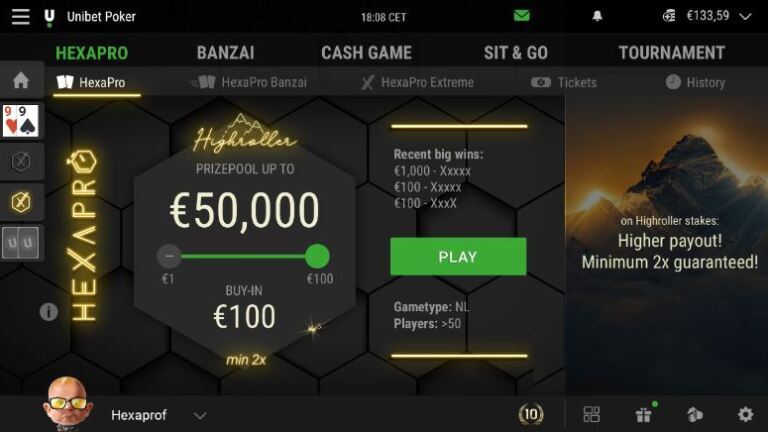All hands should be played against the full possible range of your opponent!
Until a certain hand gets to the showdown, you cannot exactly know what cards your opponent is holding, so you set up a possible range using the data you can collect (opponent stats, position, actual table dynamics, and so on). This hand range has to be reconsidered after every piece of new information. The main point is that the given hand should always be played by thinking of what the correct step would be against a possible full range. IT IS CRUCIAL TO THINK IN RANGES!!
According to this, all steps can be traced back to two main aims:
1. To make your opponent call with a range that is at the moment weaker than yours (value bet)
2. To make him fold his better range (bluff)
Examples for scenario no.1: You cbet with top pair through 3 streets against a passive calling station fish because you know that your opponent will still call with a bottom pair, then you cbet on the 2tone flop with second pair because you know that your opponent will still call with a flush draw (this is called defending your hand against the flush, but in truth it is a simple value bet, because the weaker opponent can still call because of the FD).
Example for scenario no.2: You raised with Ax preflop, then cbet on an 8-high flop. Opponent calls, the turn comes J, you bet again, opponent still calls, the river is a K, you bet again. Here, the goal is self-explanatory: you have A-high, so any stray pair would beat you, but with the given board texture you can make your opponent fold many better hands with this line.
IT IS NOT BENEFICIAL TO RAISE FOR INFORMATION, because it basically suggests that you have absolutely no clue what your opponent might be holding. If your opponent folds after this, you realise he had a bad hand, but this is not valuable information. And if he raises back, you shrug your shoulders, saying "hmm.. He must have a strong hand", and you fold.
Of course, the reaction of your opponent has in itself some kind of extra information after every bet you make, and you really need to use this information to reduce your opponent's range, and make your decision according to that. But solely raising for information is not a good idea. It is simply a too expensive move.
Distortion of estimated ranges in the case of a downswing
Thinking in ranges is especially important when you are not in the optimal mood. Being in a downswing, for example, does not mean that your opponent is more likely to hit the flop and always have a better hand.
When in a downswing, players tend to think that the opponent always holds those cards from his range that would beat our hand, so they do not cbet. And in the case of a big upswing, when you reach the 'positive tilt', you feel invincible and always put that narrow range in your opponent's hand that you would beat. Do not fall for this! Cards don't remember; every single hand is independent from the other. In all cases, you have to choose the option with the biggest EV and not think in concrete hands.
And now, let us have a look at one of the most useful poker tools, with the help of which you can easily determine the strength of your hand against different ranges:
PokerStove (download link)
PokerStove is a software tool, which cannot be missing from the library of any CG or tournament player. With the help of it, you can analyse situations, not only against a certain hand, but also against a certain range. Less experienced players often pose questions like "What if he has the XY (nut or other very strong) hand?"
Well, the answer to this question can be no other than this: "You are in trouble then, that's it." Still, it s very important to see how your hand would perform not only against a very strong hand your opponent could be holding, but against his whole range. And PokerStove will help you do this.
Example no. 1:
a.)
It is +EV to push all-in with a flop set on a monotone flop even if your opponent shows flop flush.

Board:



equity win tie pots won pots tied
Hand 0: 50.859% 50.22% 00.64% 79044 1012.50 { 77 }
Hand 1: 49.141% 48.50% 00.64% 76341 1012.50 { JJ+, 33, AcKc, AcQc, AcJc, AcTc, Ac9c, Ac8c, Ac7c, Ac6c, Ac5c, Ac4c, Ac3c, Ac2c, KcQc, KcJc, KcTc, Kc9c, Kc8c, Kc7c, Kc6c, Kc5c, Kc4c, Kc3c, Kc2c, QcJc, QcTc, Qc9c, Qc8c, Qc7c, Qc6c, Qc5c, Qc4c, Qc3c, Qc2c, JcTc, Jc9c, Jc8c, Jc7c, Jc6c, Jc5c, Jc4c, Jc3c, Jc2c, Tc9c, Tc8c, Tc7c, Tc6c, Tc5c, Tc4c }
It can be seen that you still have 50% against such a narrow range, so it is already +EV going all-in with the set just because of the dead money already in the pot.
b.)
Your opponent could also have two pairs, a nut flush draw, or top pair plus high flush draw. If you count these as well, you have even better chances:
Board:



equity win tie pots won pots tied
Hand 0: 59.920% 59.19% 00.73% 137115 1696.50 { 77 }
Hand 1: 40.080% 39.35% 00.73% 91152 1696.50 { JJ+, 33, AcKc, AcQc, AcJc, AcTc, Ac9c, Ac8c, Ac7c, Ac6c, Ac5c, Ac4c, Ac3c, Ac2c, KcQc, KcJc, KcTc, Kc9c, Kc8c, Kc7c, Kc6c, Kc5c, Kc4c, Kc3c, Kc2c, QcJc, QcTc, Qc9c, Qc8c, Qc7c, Qc6c, Qc5c, Qc4c, Qc3c, Qc2c, JcTc, Jc9c, Jc8c, Jc7c, Jc6c, Jc5c, Jc4c, Jc3c, Jc2c, Tc9c, Tc8c, Tc7c, Tc6c, Tc5c, Tc4c, AcKd, AcKh, AcKs, AdKc, AhKc, AsKc, AcQd, AcQh, AcQs, AdQc, AhQc, AsQc, AcJd, AcJh, AcJs, J7o, J3o, 73o }
Example no.2:
What equity can you count on when you get all-in with A
A  8 after your cbet got raised on a
8 after your cbet got raised on a  T
T  7
7  6 flop?
6 flop?

Board:



equity win tie pots won pots tied
Hand 0: 45.576% 44.59% 00.98% 31785 701.50 { A 8 }
Hand 1: 54.424% 53.44% 00.98% 38092 701.50 { TT+, 77-66, KsQs, KsJs, QsJs, T7s-T6s, 98s, 76s, T7o-T6o, 98o, 76o }
If your opponent calls the all-in with this range, it can be seen that you will have a disadvantage, but chances are that he will raise you with not only these hands. If you have any information on what hands your opponent usually plays, how often he folds to cbets, and in what percentage he raises to a cbet, you can easily calculate with PokerStove and Excel whether folding or all-in is the right decision. Obviously, you have to take into consideration the size of the pot and the size of the effective stacks, as it matters whether you started the hand with 80 or 180 BBs deep.
A few classic preflop all-in problems: when you are considerably behind every other player during the showdown, you can get the sense that the all-in was not a good choice after all. Let's see if that really is the case.
Example no. 3:
a.)
You 3bet with QQ to a raise at 100 BB deep, to which your opponent 4bets.
Betting round:
raise 3BB
3bet 9BB
4bet 23BB
pot: 33.5 BB (let's suppose the blinds folded)
Let's presume your opponent never makes a 4bet bluff, and made the 4bet with a QQ+ AK range, with which he will also call your all-in. In this case, your chances are these:
QQ: 40.2%
QQ+ AKo, AKs: 59.793%
If you go all-in here, you will finish with 81 BBs after the hand, which means that you lose 19 BBs on average. If you fold at this point, you only lose 9BBs, so folding is the better option.
b.)
Let's also take JJ into your opponents range. In this case, chances will be the following:
QQ: 47.3%
JJ+, AKs, AKo: 52.6%
After the preflop all-in, you will lose exactly 6 big blinds on average. With the preflop fold, however, you would lose 9BB, so at this point it is still worth going all-in even if you know you will have a disadvantage, as -6BB is a much better EV than -9BB.
c.)
Finally, let's see what happens when your opponent 4bet bluffs exactly once out of 10 times and will fold to the all-in according to that.
In 10% of the cases, you will take the pot, that is the 33.5BBs. In 90% of the cases, you play the flip against your opponent and lose 6BBs.
All in all, your total winnings would make -1.26BBs per hand, which is a much better EV than the -9BBs resulting from a fold.
Example no. 4:
a.)
You raised with AKo, your opponent 3bets and you would like to 4bet, but to that, he will only go all in with a better/same hand. Is that good for you?
Betting round:
raise 3BB
3bet 9BB
pot: 13.5 BB (considering the blinds have folded)
Let's say your opponent's 3bet percentage is around the average 5.5%.
If you 4bet, he will go all-in with QQ+ AK+ and fold everything else.
Your chances when all-in:
AKo: 38.8%
QQ+ AKs, AKo: 61.1%
Your opponent 3bets in 5.5% of the cases, and goes all-in with a 2.6% range, so you have a 52% folding equity. In this case, you will win the 13.5 big blinds and lose 21.8 big blinds in 48% of the cases. All in all, you lose 2.68 BBs, while losing 3BBs in the case of a fold.
b.)
Let's see what the scenario is when your opponent has a 6.5% 3bet percentage:
As your opponent 3bets with a wider range, you suppose that the value 3bet range is wider as well, so he would go all-in to your 4bet with JJ+ AKo+ type hands.
Folding equity preflop 53.8%, when you win 13.5BBs.
In all-in, you lose 20BBs
All in all, you would lose 1.43BBs per hand, while in the case of you folding, you would lose 3BBs, which means that the all-in is the better decision.
Finally, let's see some cases from the examples mentioned above if the size of your opponent's reraise is considerably bigger:
Example no. 3 modified:
Your opponent 4bets to 26BBs instead of 23.
a.) and b.) : results will not change
c.) As in this case you take a bigger pot if your opponent folds and lose the same amount in an all-in, the end results change to -0.16BBs, which almost 0EV gameplay. Compare this with the preflop fold (-9BBs).
Example no. 4 modified:
Your opponent 3bets to 11BBs instead of 9.
a.) In this case, your losses per hand will be 1.63BBs (compare to the -3BBs when folding)
b.) here, you will only lose 0.35 BBs per hand instead of 3.
In conclusion, it can be seen that in potentially easy situations expected value can significantly change when modifying the circumstances a bit. These situations can be effectively analysed with PokerStove, so you will be able to make more accurate decisions during playing than the players that don't use software like this.
The series will soon continue with the next part. By clicking on the appropriate links, you can read the first, second,third, fourth, fifth, sixth, seventh and eighth parts.
Until a certain hand gets to the showdown, you cannot exactly know what cards your opponent is holding, so you set up a possible range using the data you can collect (opponent stats, position, actual table dynamics, and so on). This hand range has to be reconsidered after every piece of new information. The main point is that the given hand should always be played by thinking of what the correct step would be against a possible full range. IT IS CRUCIAL TO THINK IN RANGES!!
According to this, all steps can be traced back to two main aims:
1. To make your opponent call with a range that is at the moment weaker than yours (value bet)
2. To make him fold his better range (bluff)
Examples for scenario no.1: You cbet with top pair through 3 streets against a passive calling station fish because you know that your opponent will still call with a bottom pair, then you cbet on the 2tone flop with second pair because you know that your opponent will still call with a flush draw (this is called defending your hand against the flush, but in truth it is a simple value bet, because the weaker opponent can still call because of the FD).
Example for scenario no.2: You raised with Ax preflop, then cbet on an 8-high flop. Opponent calls, the turn comes J, you bet again, opponent still calls, the river is a K, you bet again. Here, the goal is self-explanatory: you have A-high, so any stray pair would beat you, but with the given board texture you can make your opponent fold many better hands with this line.
IT IS NOT BENEFICIAL TO RAISE FOR INFORMATION, because it basically suggests that you have absolutely no clue what your opponent might be holding. If your opponent folds after this, you realise he had a bad hand, but this is not valuable information. And if he raises back, you shrug your shoulders, saying "hmm.. He must have a strong hand", and you fold.
Of course, the reaction of your opponent has in itself some kind of extra information after every bet you make, and you really need to use this information to reduce your opponent's range, and make your decision according to that. But solely raising for information is not a good idea. It is simply a too expensive move.
Distortion of estimated ranges in the case of a downswing
Thinking in ranges is especially important when you are not in the optimal mood. Being in a downswing, for example, does not mean that your opponent is more likely to hit the flop and always have a better hand.
When in a downswing, players tend to think that the opponent always holds those cards from his range that would beat our hand, so they do not cbet. And in the case of a big upswing, when you reach the 'positive tilt', you feel invincible and always put that narrow range in your opponent's hand that you would beat. Do not fall for this! Cards don't remember; every single hand is independent from the other. In all cases, you have to choose the option with the biggest EV and not think in concrete hands.
And now, let us have a look at one of the most useful poker tools, with the help of which you can easily determine the strength of your hand against different ranges:
PokerStove (download link)
PokerStove is a software tool, which cannot be missing from the library of any CG or tournament player. With the help of it, you can analyse situations, not only against a certain hand, but also against a certain range. Less experienced players often pose questions like "What if he has the XY (nut or other very strong) hand?"
Well, the answer to this question can be no other than this: "You are in trouble then, that's it." Still, it s very important to see how your hand would perform not only against a very strong hand your opponent could be holding, but against his whole range. And PokerStove will help you do this.
Example no. 1:
a.)
It is +EV to push all-in with a flop set on a monotone flop even if your opponent shows flop flush.

Board:



equity win tie pots won pots tied
Hand 0: 50.859% 50.22% 00.64% 79044 1012.50 { 77 }
Hand 1: 49.141% 48.50% 00.64% 76341 1012.50 { JJ+, 33, AcKc, AcQc, AcJc, AcTc, Ac9c, Ac8c, Ac7c, Ac6c, Ac5c, Ac4c, Ac3c, Ac2c, KcQc, KcJc, KcTc, Kc9c, Kc8c, Kc7c, Kc6c, Kc5c, Kc4c, Kc3c, Kc2c, QcJc, QcTc, Qc9c, Qc8c, Qc7c, Qc6c, Qc5c, Qc4c, Qc3c, Qc2c, JcTc, Jc9c, Jc8c, Jc7c, Jc6c, Jc5c, Jc4c, Jc3c, Jc2c, Tc9c, Tc8c, Tc7c, Tc6c, Tc5c, Tc4c }
It can be seen that you still have 50% against such a narrow range, so it is already +EV going all-in with the set just because of the dead money already in the pot.
b.)
Your opponent could also have two pairs, a nut flush draw, or top pair plus high flush draw. If you count these as well, you have even better chances:
Board:



equity win tie pots won pots tied
Hand 0: 59.920% 59.19% 00.73% 137115 1696.50 { 77 }
Hand 1: 40.080% 39.35% 00.73% 91152 1696.50 { JJ+, 33, AcKc, AcQc, AcJc, AcTc, Ac9c, Ac8c, Ac7c, Ac6c, Ac5c, Ac4c, Ac3c, Ac2c, KcQc, KcJc, KcTc, Kc9c, Kc8c, Kc7c, Kc6c, Kc5c, Kc4c, Kc3c, Kc2c, QcJc, QcTc, Qc9c, Qc8c, Qc7c, Qc6c, Qc5c, Qc4c, Qc3c, Qc2c, JcTc, Jc9c, Jc8c, Jc7c, Jc6c, Jc5c, Jc4c, Jc3c, Jc2c, Tc9c, Tc8c, Tc7c, Tc6c, Tc5c, Tc4c, AcKd, AcKh, AcKs, AdKc, AhKc, AsKc, AcQd, AcQh, AcQs, AdQc, AhQc, AsQc, AcJd, AcJh, AcJs, J7o, J3o, 73o }
Example no.2:
What equity can you count on when you get all-in with
 A
A  8 after your cbet got raised on a
8 after your cbet got raised on a  T
T  7
7  6 flop?
6 flop?
Board:



equity win tie pots won pots tied
Hand 0: 45.576% 44.59% 00.98% 31785 701.50 { A 8 }
Hand 1: 54.424% 53.44% 00.98% 38092 701.50 { TT+, 77-66, KsQs, KsJs, QsJs, T7s-T6s, 98s, 76s, T7o-T6o, 98o, 76o }
If your opponent calls the all-in with this range, it can be seen that you will have a disadvantage, but chances are that he will raise you with not only these hands. If you have any information on what hands your opponent usually plays, how often he folds to cbets, and in what percentage he raises to a cbet, you can easily calculate with PokerStove and Excel whether folding or all-in is the right decision. Obviously, you have to take into consideration the size of the pot and the size of the effective stacks, as it matters whether you started the hand with 80 or 180 BBs deep.
A few classic preflop all-in problems: when you are considerably behind every other player during the showdown, you can get the sense that the all-in was not a good choice after all. Let's see if that really is the case.
Example no. 3:
a.)
You 3bet with QQ to a raise at 100 BB deep, to which your opponent 4bets.
Betting round:
raise 3BB
3bet 9BB
4bet 23BB
pot: 33.5 BB (let's suppose the blinds folded)
Let's presume your opponent never makes a 4bet bluff, and made the 4bet with a QQ+ AK range, with which he will also call your all-in. In this case, your chances are these:
QQ: 40.2%
QQ+ AKo, AKs: 59.793%
If you go all-in here, you will finish with 81 BBs after the hand, which means that you lose 19 BBs on average. If you fold at this point, you only lose 9BBs, so folding is the better option.
b.)
Let's also take JJ into your opponents range. In this case, chances will be the following:
QQ: 47.3%
JJ+, AKs, AKo: 52.6%
After the preflop all-in, you will lose exactly 6 big blinds on average. With the preflop fold, however, you would lose 9BB, so at this point it is still worth going all-in even if you know you will have a disadvantage, as -6BB is a much better EV than -9BB.
c.)
Finally, let's see what happens when your opponent 4bet bluffs exactly once out of 10 times and will fold to the all-in according to that.
In 10% of the cases, you will take the pot, that is the 33.5BBs. In 90% of the cases, you play the flip against your opponent and lose 6BBs.
All in all, your total winnings would make -1.26BBs per hand, which is a much better EV than the -9BBs resulting from a fold.
Example no. 4:
a.)
You raised with AKo, your opponent 3bets and you would like to 4bet, but to that, he will only go all in with a better/same hand. Is that good for you?
Betting round:
raise 3BB
3bet 9BB
pot: 13.5 BB (considering the blinds have folded)
Let's say your opponent's 3bet percentage is around the average 5.5%.
If you 4bet, he will go all-in with QQ+ AK+ and fold everything else.
Your chances when all-in:
AKo: 38.8%
QQ+ AKs, AKo: 61.1%
Your opponent 3bets in 5.5% of the cases, and goes all-in with a 2.6% range, so you have a 52% folding equity. In this case, you will win the 13.5 big blinds and lose 21.8 big blinds in 48% of the cases. All in all, you lose 2.68 BBs, while losing 3BBs in the case of a fold.
b.)
Let's see what the scenario is when your opponent has a 6.5% 3bet percentage:
As your opponent 3bets with a wider range, you suppose that the value 3bet range is wider as well, so he would go all-in to your 4bet with JJ+ AKo+ type hands.
Folding equity preflop 53.8%, when you win 13.5BBs.
In all-in, you lose 20BBs
All in all, you would lose 1.43BBs per hand, while in the case of you folding, you would lose 3BBs, which means that the all-in is the better decision.
Finally, let's see some cases from the examples mentioned above if the size of your opponent's reraise is considerably bigger:
Example no. 3 modified:
Your opponent 4bets to 26BBs instead of 23.
a.) and b.) : results will not change
c.) As in this case you take a bigger pot if your opponent folds and lose the same amount in an all-in, the end results change to -0.16BBs, which almost 0EV gameplay. Compare this with the preflop fold (-9BBs).
Example no. 4 modified:
Your opponent 3bets to 11BBs instead of 9.
a.) In this case, your losses per hand will be 1.63BBs (compare to the -3BBs when folding)
b.) here, you will only lose 0.35 BBs per hand instead of 3.
In conclusion, it can be seen that in potentially easy situations expected value can significantly change when modifying the circumstances a bit. These situations can be effectively analysed with PokerStove, so you will be able to make more accurate decisions during playing than the players that don't use software like this.
The series will soon continue with the next part. By clicking on the appropriate links, you can read the first, second,third, fourth, fifth, sixth, seventh and eighth parts.




















